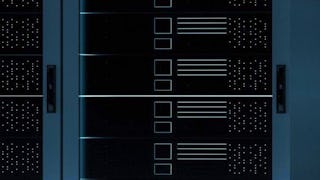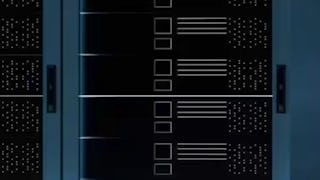This course is designed for scientists, engineers, students, and professionals looking to develop efficient solutions for high-performance and distributed computing systems. It focuses on parallel programming using the Message Passing Interface (MPI), a standard for scalable communication across multiple processors. Learners should have basic programming experience in C or C++ and familiarity with Linux. No prior knowledge of MPI is required.

Gain next-level skills with Coursera Plus for $199 (regularly $399). Save now.

Parallel Computing with MPI
This course is part of High-Performance and Parallel Computing Specialization


Instructors: Shelley Knuth
Included with
Recommended experience
What you'll learn
Design and implement parallel algorithms using MPI
Apply key communication patterns, including point-to-point, collective, and nonblocking communication
Improve performance through load balancing and overlapping communication with computation
Work with custom communicators and derived data types
Skills you'll gain
Details to know

Add to your LinkedIn profile
August 2025
5 assignments
See how employees at top companies are mastering in-demand skills

Build your subject-matter expertise
- Learn new concepts from industry experts
- Gain a foundational understanding of a subject or tool
- Develop job-relevant skills with hands-on projects
- Earn a shareable career certificate

There are 5 modules in this course
This module focuses on the key concepts and techniques for transforming serial algorithms into parallel solutions using the Message Passing Interface (MPI). You will explore the principles of message passing, synchronization, and parallel thinking, equipping them with the skills to efficiently utilize parallel computing in their projects.
What's included
5 videos2 readings1 assignment1 programming assignment
This module delves into the advanced communication techniques in MPI, focusing on transforming serial algorithms into parallel implementations. You will learn about nonblocking communication, point-to-point communication, and the intricacies of blocking sends and receives, along with strategies to avoid deadlock in their parallel applications.
What's included
5 videos1 assignment1 programming assignment
This module focuses on enhancing the performance of parallel applications using nonblocking communication and effective load-balancing strategies. You will learn how to implement nonblocking communication, overlap communication with computation, and achieve optimal load distribution to maximize speedup in their MPI programs.
What's included
4 videos1 assignment1 programming assignment
This module explores advanced parallel computing concepts using MPI, focusing on communicator creation, domain decomposition, and derived datatypes. You will learn to create custom communicators for process coordination and effectively divide computational domains. The module covers MPI's derived datatypes, including contiguous, vector, indexed, and struct types, enabling efficient communication for both regular and irregular data patterns in high-performance applications.
What's included
7 videos1 assignment1 programming assignment
This module focuses on parallel I/O in MPI, emphasizing efficient data management in high-performance computing. You will learn the principles of MPI I/O and explore practical examples of concurrent data operations. The module also introduces HDF5, a widely used data model and file format in scientific computing, highlighting its features for managing large datasets. By the end, students will be equipped to implement effective parallel I/O strategies using MPI and HDF5 in their applications.
What's included
5 videos1 assignment
Earn a career certificate
Add this credential to your LinkedIn profile, resume, or CV. Share it on social media and in your performance review.
Instructors


Offered by
Explore more from Computer Security and Networks
 Status: Free Trial
Status: Free TrialUniversity of Colorado Boulder
 Status: Free Trial
Status: Free TrialUniversity of Colorado Boulder
 Status: Free Trial
Status: Free TrialJohns Hopkins University
 Status: Free Trial
Status: Free TrialRice University
Why people choose Coursera for their career





Open new doors with Coursera Plus
Unlimited access to 10,000+ world-class courses, hands-on projects, and job-ready certificate programs - all included in your subscription
Advance your career with an online degree
Earn a degree from world-class universities - 100% online
Join over 3,400 global companies that choose Coursera for Business
Upskill your employees to excel in the digital economy
Frequently asked questions
To access the course materials, assignments and to earn a Certificate, you will need to purchase the Certificate experience when you enroll in a course. You can try a Free Trial instead, or apply for Financial Aid. The course may offer 'Full Course, No Certificate' instead. This option lets you see all course materials, submit required assessments, and get a final grade. This also means that you will not be able to purchase a Certificate experience.
When you enroll in the course, you get access to all of the courses in the Specialization, and you earn a certificate when you complete the work. Your electronic Certificate will be added to your Accomplishments page - from there, you can print your Certificate or add it to your LinkedIn profile.
Yes. In select learning programs, you can apply for financial aid or a scholarship if you can’t afford the enrollment fee. If fin aid or scholarship is available for your learning program selection, you’ll find a link to apply on the description page.
More questions
Financial aid available,

